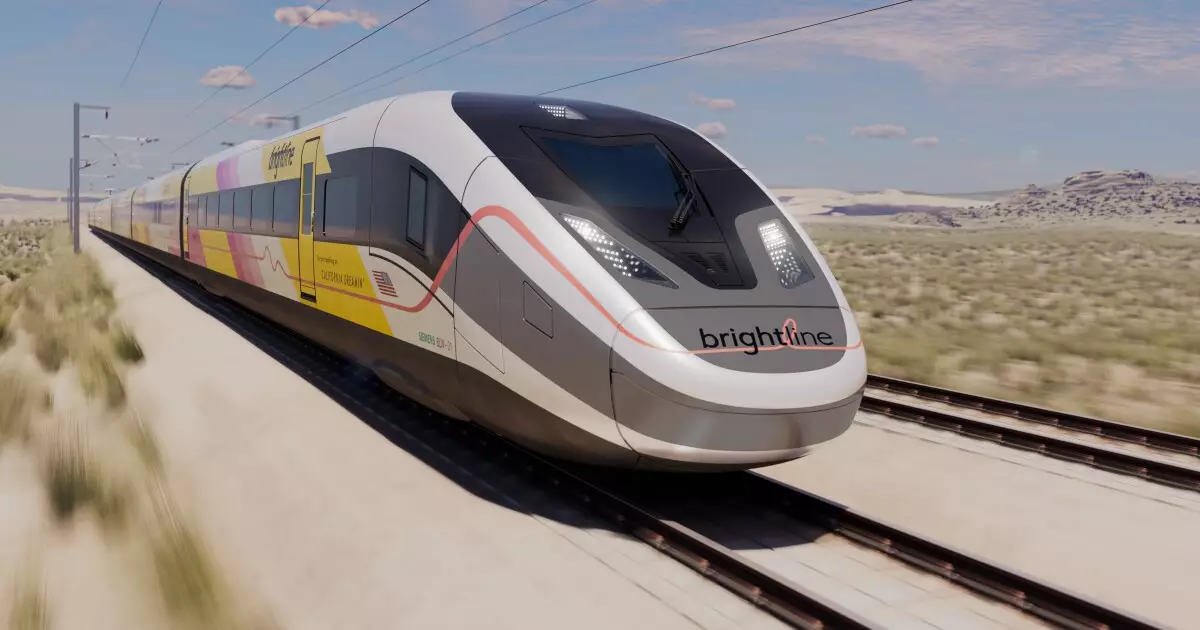Brightline West, the ambitious bullet train project linking Las Vegas and Los Angeles, has recently made waves in the financial market with its noteworthy offering of $2.5 billion in unrated private activity bonds. This event represents what could potentially be the largest high-yield municipal bond issuance of the year, marking a significant milestone in the funding and development of high-speed rail in the United States. With its unique financing structure and impressive demand, Brightline West is positioned to not only innovate transportation in the region but also reshape investor perceptions regarding the potential of private high-speed rail projects.
The bond deal in question was structured with a single $2 billion CUSIP, a decision that has drawn praise for enhancing liquidity, a vital aspect for investors in volatile markets. Given that over $3.4 billion in orders poured in from 75 different accounts, the appetite for this investment opportunity was undeniably strong. As Jim Lyman of Belle Haven Investments noted, the deal stands out within the high-yield market by offering a combination of liquidity, yield, and backing from a reputable sponsor, alongside a robust economic premise.
This massive interest indicates that investors are becoming increasingly optimistic about the financial viability of high-speed rail projects. The offered yields, described as attractive and “eye-popping” by participants, reflect the growing trend of seeking high returns in an environment where traditional investment vehicles often underperform. The specifics of this bond, characterized by a lucrative 9.5% coupon rate, further enhance its appeal. The combination of a structured product at a discount and its callable premium raised eyebrows, suggesting that investors are finding it difficult to overlook such a rare opportunity.
Despite its promising start, several challenges loom ahead for Brightline West. The project aims for completion by December 2028. Unfortunately, this timeline has already slipped from earlier targets that included the hope of launching in time for the Los Angeles Olympics. Thus, the urgency for effective financing solutions becomes evident. The $2.5 billion raised serves as merely the first step in a larger quest to secure total project financing estimated at $12.4 billion, spotlighting the technical and fiscal hurdles still to overcome.
To fully fund this expansive initiative, executives must secure a $6 billion bank facility within 180 days, which brings both uncertainty and urgency into the mix. This obligation highlights the precarious nature of such large-scale infrastructure projects where missing funding deadlines can lead to mandatory bond redemptions. Such situations necessitate careful financial maneuvering and strategic planning from the management team.
The announcement from the Trump administration praising the Brightline West project reflects a healthy political backing that could benefit its successful execution. Interestingly, amidst calls to rescind significant federal grants allocated for the California high-speed rail project, Brightline West recently received a $3 billion federal grant from the Biden administration. This interplay between different political administrations underscores not only the potential advantages for Brightline but also the complex environment surrounding federal transportation funding in the U.S.
There is notable anxiety from investors regarding the federal grants which are subjected to various uncertainties. The Finance documents elaborated on the existing commitments that had already been addressed in previous Congressional funding cycles. The assurance provided by those allocations, combined with the positive legislative signals from the current administration, designed to boost investor confidence, is crucial as the project moves forward.
For many investment firms, such as GW&K Investment Management, the complexity of these deals might lead to hesitancy. In an industry where traditional structures are favored, the high-yield, unrated status of Brightline bonds can pose risks some are unwilling to take. However, the robust backing by Fortress Investment Group adds a layer of credibility that may sway opinions among cautious investors.
As Brightline West gears up for construction in the approaching months, the potential to secure investment-grade ratings for their outstanding tax-exempt bonds stands as a notable future goal. Successfully achieving this could reshape investor relations and enhance the project’s financial stability in the long term.
The launch of Brightline West serves as a pivotal moment not only for high-speed rail transportation in the United States but also for the broader market of municipal bond financing. With substantial investor interest, a strategic financial setup, and potential federal support, the project stands at a critical juncture. Moving forward, maintaining momentum and successfully navigating the challenges ahead will determine whether Brightline West can live up to its ambitious aspirations of revolutionizing travel between two major urban centers.


Leave a Reply